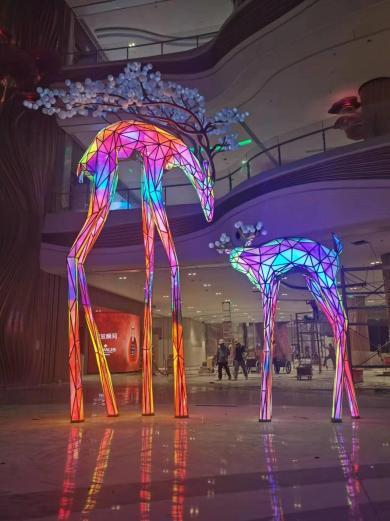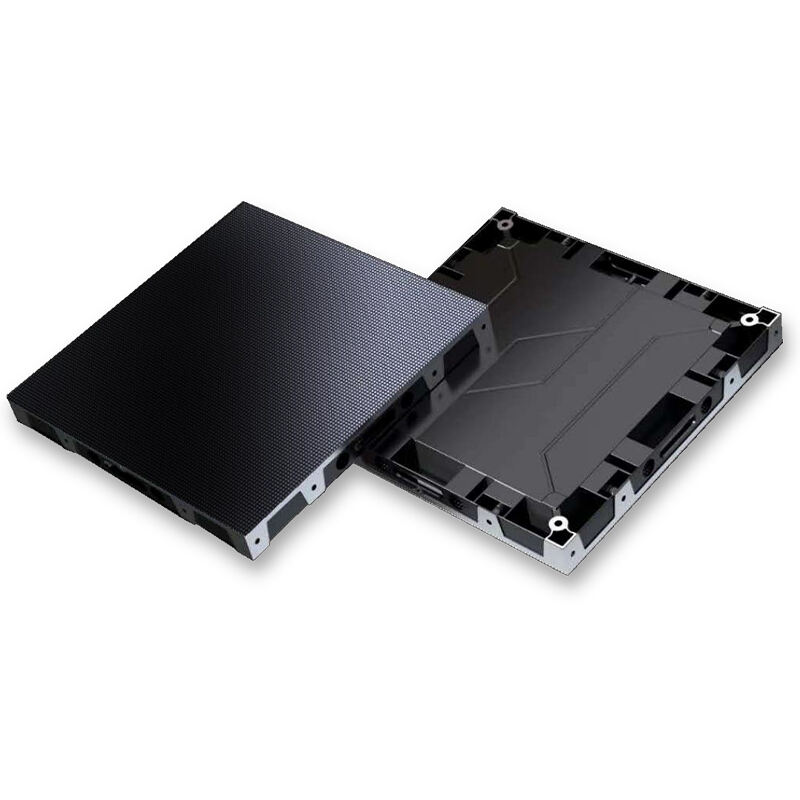Indoor LED display: high definition and multifunctional applications
Overview of High Definition Indoor LED Display Applications
High Definition Indoor LED Displays are characterized by advanced features that ensure superior visual quality. These displays are defined by key attributes like pixel pitch, resolution, and visual clarity. Pixel pitch refers to the distance between LEDs and is crucial in determining the resolution of the display. High resolution translates into high-definition (HD), providing sharp and detailed visuals, ideal for dynamic environments like retail stores and conference rooms. The visual clarity, owed to high brightness and contrast levels, ensures captivating display even in well-lit indoor settings, significantly enhancing viewer experience.
In digital signage, the importance of high definition cannot be overstressed. High-definition displays foster improved viewer engagement and retention. Studies indicate that audiences are 2.5 times more likely to engage with digital content provided in HD. The visual appeal of high-definition displays captures attention, driving higher audience interaction rates and promoting brand messaging effectively. These enhancements in digital signage visibility underscore the growing preference for HD displays in various sectors, from advertising to entertainment settings, where engagement is paramount.
Benefits of High Definition Indoor LED Displays
High definition indoor LED displays offer exceptional picture quality and color accuracy. This is due to advancements in LED technology, which enable vibrant colors and sharp images through improved color depth and high refresh rates. Unlike traditional display technology, high definition indoor LED displays provide lifelike pictures that substantially enhance viewer experiences, making them perfect for various applications such as digital signage and flexible LED displays. With superior capabilities, these displays cater to the increasing demands for engaging visual content in both commercial and recreational settings.
Furthermore, high definition LED displays are recognized for their remarkable energy efficiency and longevity. Compared to traditional display methods, LED displays consume less power, thereby reducing operational costs significantly. According to industry analyses, they not only offer a more sustainable solution but also promise a longer lifespan, which can result in lower maintenance and replacement costs over time. This advantage makes LED video walls and digital signage an economically and environmentally smart choice, aligning with the prevailing global push for greener technologies and practices.
Common Applications of High Definition Indoor LED Displays
High definition indoor LED displays have become an integral tool in the retail sector through digital signage solutions. Retailers use these displays to captivate customers with vibrant promotional content, boosting sales and enhancing brand visibility. For instance, stores often place large LED screens at entrances or strategic points to showcase product features, seasonal discounts, and interactive ads. By grabbing the attention of passersby, digital signage enables retailers to influence purchase decisions positively.
In bustling high-traffic areas such as airports and malls, high definition LED displays serve as a powerful medium for advertising. These environments present advertisers with a unique opportunity to reach a large audience with dynamic and engaging content. Case studies demonstrate that using LED displays in these locales significantly enhances brand recognition and recall. For instance, airports frequently use LED screens to display flight information alongside sponsored advertisements, ensuring high visibility in a busy environment.
High definition indoor LED displays also play a crucial role in events and exhibitions. During corporate events, trade shows, and exhibitions, these displays are used to present detailed visuals that engage and inform attendees. For businesses showcasing products or services, LED displays offer an immersive experience that can set their exhibits apart from the competition. The use of LED video walls can captivate audiences with seamless, colorful displays that highlight a company’s offerings, thus enhancing event presence and impact.
Technological Innovations in Indoor LED Displays
Technological advancements in indoor LED displays have significantly enhanced their functionality and appeal. Among these advancements, Micro-LED and Mini-LED technologies have transformed the landscape by improving display quality and reducing the dimensions necessary for various installations. These technologies offer brighter images and more vibrant colors, making them ideal for both small and large-scale digital signage solutions. With their energy efficiency and reduced need for frequent maintenance, LED display screens provide a cost-effective solution for businesses across various industries.
Another critical innovation is HDR (High Dynamic Range) technology. HDR offers enhanced visual depth, resulting in more realistic images that captivate audiences. It achieves this by delivering a broader range of colors and brightness levels, as evidenced by the growing preference among users for HDR content. This technology is particularly relevant in places where visual impact is paramount, such as indoor advertising and interactive LED video walls, allowing for truly immersive viewing experiences. The adaptation of such advanced technologies highlights the ongoing evolution within the LED display industry.
Interactive Experiences Enabled by Indoor LED Displays
Interactive indoor LED displays are transforming the way customers engage with brands, especially in retail settings. Touch-enabled displays allow for dynamic interaction, making the shopping experience more engaging and personalized. Customers can seamlessly explore product details, check availability, and even visualize products in various settings through interactive digital signage. Such immersive experiences not only enhance customer satisfaction but also boost sales and brand loyalty by creating memorable shopping encounters.
In educational environments, interactive LED displays play a pivotal role in advancing teaching methodologies. A case study involving a leading education provider showcased significant improvement in student engagement and learning outcomes when interactive displays were integrated into classrooms. These displays support dynamic content delivery, enabling teachers to present complex concepts visually, thus making learning more accessible and engaging. The integration of interactive tools fosters collaboration and encourages active participation from students, leading to a more enriched educational experience.
The Role of Software in Managing Indoor LED Displays
Digital signage software solutions play a crucial role in effectively managing content on LED displays. These software options provide user-friendly interfaces, enabling operators to streamline content creation, scheduling, and distribution. Popular platforms like Scala and ScreenCloud are noted for their intuitive design, accommodating users at all tech levels. Their features often include drag-and-drop content creation, multi-display control, and analytics tracking to optimize content strategies. By simplifying the management process, businesses ensure that content is engaging and aligned with marketing objectives.
Real-time content management further enhances the effectiveness of indoor LED displays by allowing for instantaneous updates and targeted messaging. This capability is essential for dynamic environments such as airports or retail spaces where announcements and promotions need to be timely and relevant. For instance, McDonald's successfully utilizes real-time updates to tailor its menu displays based on time of day, thus increasing customer engagement and improving operational efficiency. This approach not only captivates viewers but also maximizes the return on investment for digital signage initiatives.
Future Trends in High Definition Indoor LED Displays
The future of high-definition indoor LED displays is set to be transformed by the integration with smart technologies. As LED displays become more sophisticated, their convergence with the Internet of Things (IoT) and Artificial Intelligence (AI) technologies is facilitating smarter, more efficient operations. For instance, AI can analyze audience engagement in real-time, enabling dynamic content adjustments to optimize viewer interaction. IoT devices, when linked with LED displays, can offer seamless communication and data exchange across multiple platforms, enhancing operational efficiency and interactivity.
Furthermore, flexible and curved LED displays are emerging as innovative solutions in modern architecture and event planning. These displays offer significant aesthetic and functional benefits, allowing designers to seamlessly integrate digital signage into non-traditional spaces. Whether it's a curved wall in a modern conference hall or an artistic installation in a shopping mall, flexible LED screens are revolutionizing the way digital content is presented. This adaptability opens new doors for creative expression and dynamic information displays in diverse settings.







 Hot News
Hot News